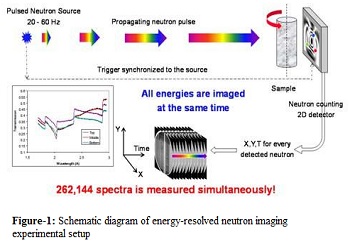
Anton S Tremsin
University of California at Berkeley
Title: Non-destructive studies of microstructure and elemental composition of crystalline materials through energy-resolved neutron imaging
Biography
Biography: Anton S Tremsin
Abstract
Energy-resolved neutron imaging provide unique possibilities to study materials non-destructively in situations, where other more conventional techniques fail due to opacity of materials or their surrounding equipment (e.g., high temperature furnaces in case of crystal growth). Microstructure of both polycrystalline and single crystal materials can be investigated due to the presence of Bragg scattering of neutrons with wavelengths comparable to crystal lattice parameters. At the same time the elemental composition and temperature of the material can be mapped remotely with ~0.1 mm resolution through the analysis of neutron resonance absorption at epithermal energies, all from one measurement with no need to scan through the sample and thus allowing quantitative studies of relatively slow dynamic processes, such as crystal growth. In this paper we demonstrate the unique capabilities of energy-resolved neutron imaging to measure strain and some texture variation within metal welds, loaded fastener assemblies and metal samples produced by additive manufacturing. In situ diagnostics of crystal growth parameters such as shape and location of liquid/solid interface, mapping the elemental composition and visualization of macroscopic crystal defects and crystal mosaicity are also shown for the growth of single crystal gamma scintillators. For some compound materials, such as Cs2LaLiBr6:Ce and BaBrCl:Eu, we directly observed dynamics of phase separation within the liquid phase as well as dynamics of liquid/solid interface and dopant segregation during crystal growth at 550 oC and 850 oC temperatures, respectively. These novel studies became possible with the recent progress in novel high resolution neutron fast counting detectors and bright pulsed beamlines at spallation neutron sources, as well as development of novel data analysis tools capable of processing hundreds of thousands neutron transmission spectra in acceptable time, both of which will be briefly described in the paper.


